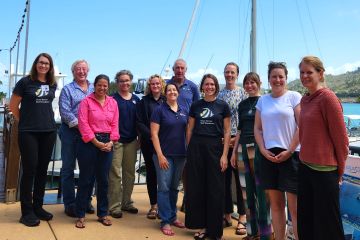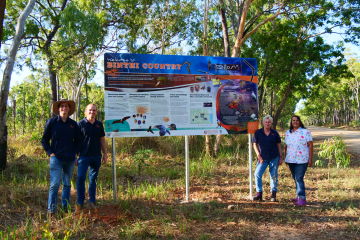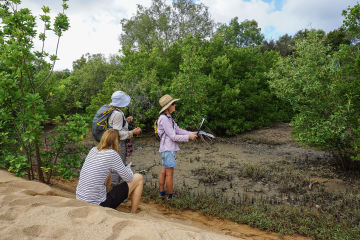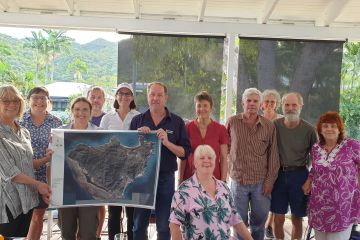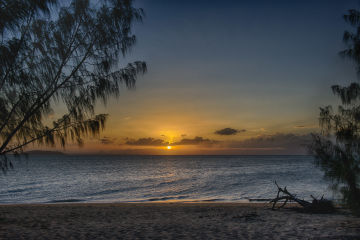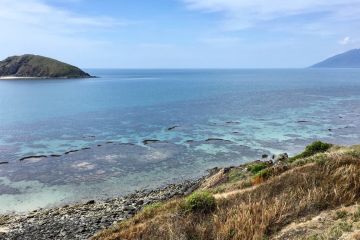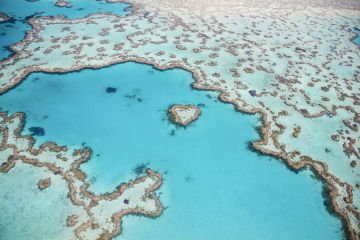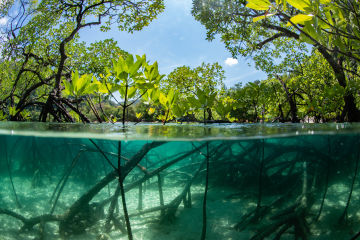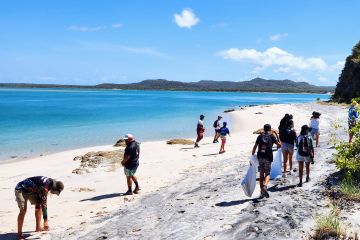
Community Action Plans
Community Action Plan Leaders along the length of the Great Barrier Reef are working with their communities to turbo-charge local Reef protection and community outcomes through collaborative planning for coastal, estuarine, and marine citizen science and community on-ground action.
#Planning for action
We need new collaborative approaches for boosting community Reef protection action and impact at the scale required to help forge a better future for the Reef.
Community Action Plans connect community aspirations with regional and reef-wide priorities to help design better ways to work together to deliver change.
In 2020, eight organisations from Cape York to Burnett Mary had hundreds of discussions and 26 workshops with community partners, Traditional Owners, youth, scientists, and Reef managers to create a Community Action Plan for their regions.
In 2021-2024, the program moved into implementation phase where project partners are translated planning into action. Fourteen Traditional Owner and community-led projects were funded to build momentum around implementing the CAPs to deliver towards the Reef 2050 Plan. The ripple effects of CAPs are ongoing.
#At a glance
52
Impact pathway roadmaps developed to outline a clear path to impact for local actions
3
Key themes for impact roadmaps including improving Reef values, reducing pressures and growing capacity and engagement
125
Diverse partners Involved in the CAP development process including Traditional Owners, science, managers, industry, community
20
Examples of community data use in the CAP development process
Five project themes emerged across the different regions, which the CAP network will be exploring:
- Citizen science for targeted action
- Traditional Owners caring for Country
- Protecting sea turtles
- Reducing climate emissions with local action
- Protecting and restoring wetlands and fish habitats
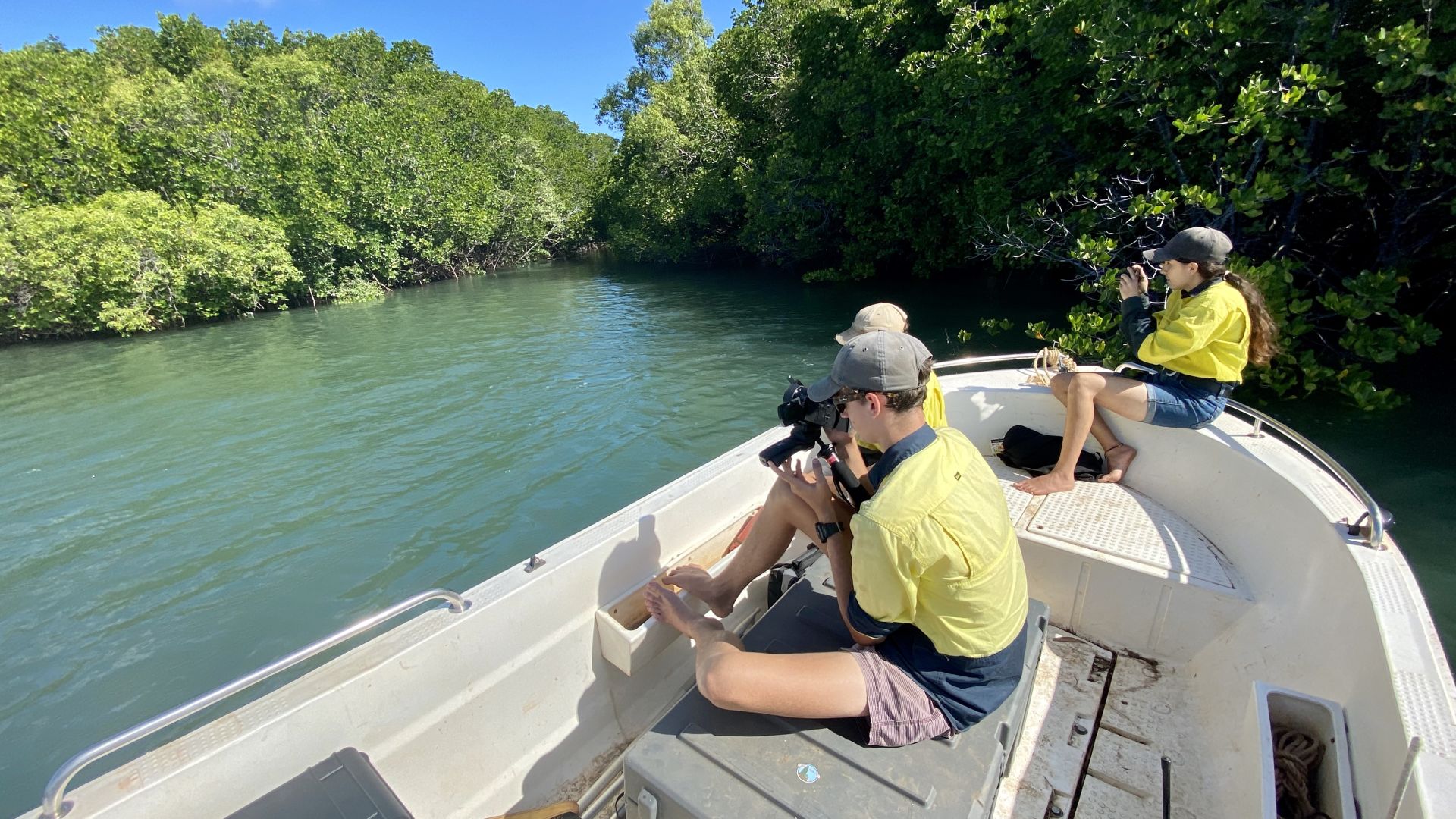
#Why is this needed?
Communities are rising to the challenge of Reef protection – wanting to understand more, influence more and do more on-ground actions. Those who give their time want to see their efforts (data, knowledge, and actions) contribute and inform decisions about Reef management and drive measurable positive change.
While multiple plans and frameworks guide the conservation and management of GBR, there is much greater potential for community action to contribute to collective efforts and provide locally-led knowledge and leadership.
Boosting collective impact frameworks requires greater knowledge exchange, more cohesive approaches, enhanced communication of community actions and seeking new ways to resource this valuable work.
The collaborative planning process aims improve the engagement of the broader community by establishing shared goals, identifying critical projects, and developing a tangible plan that further strengthens, measures and celebrates community Reef protection outcomes for the area.
#Learning and adapting
This pilot program relies on regular input from partners and applies an action learning approach that is continuously refined.
Beyond planning, we need action.
CAP Leaders will continue providing regional knowledge, connections, coordination, and capacity to help their community networks translate the CAP into action through CAP projects, storytelling about collective achievements and ongoing refinement of the CAPs to support measurable outcomes for the Reef.
Over the next two years, GBRF will continue to work closely with CAP Leaders to explore further investment opportunities, capacity needs and connections across CAP regions.
Learn more about program insights
#Project news
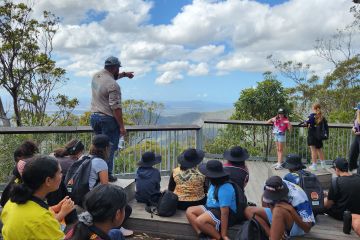
Inspiring young leaders care for the Reef on the Capricorn Coast
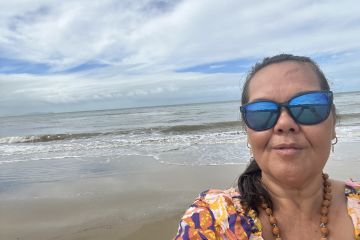
People of the Reef ·
Ramona McIvor: ‘The love of my Country, clan and community motivates me’
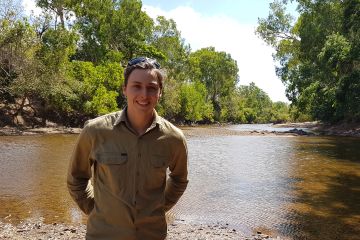
People of the Reef ·
Harry James: ‘I love seeing people motivated and equipped to care for nature’
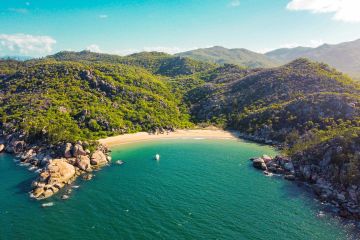
News ·
Small community, big vision
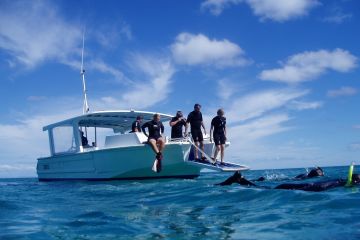
Media Release ·
Regional communities invited to lead Reef action plans
#Community Action Plans
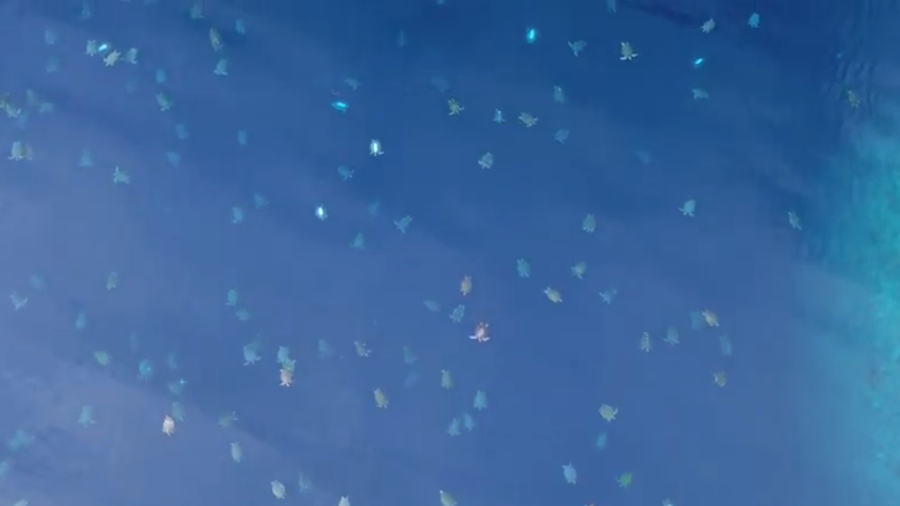
#South-East Cape York
This Community Action Plan combines voices of Traditional Owners, community members and youth to identify priorities for practical, on-ground activities to benefit the local marine and coastal environment.
The Cape York region has exceptional, intact wilderness areas and a rich cultural landscape, with Traditional Custodians maintaining strong connections to country. Yet there are also growing pressures on the region.
Cape York Natural Resource Management led the development of the Cape York Reef Community Action Plan in partnership with South-East Cape York Catchments. Engagements were focused in the Bloomfield, Cooktown and Hopevale regions.
The CAP is now being implemented, including a review of the plan with the community and providing mentoring support for current and future CAP projects.
See information on CAP projects below.
#South-East Cape York projects
On-ground projects to date are focused on priorities of Traditional Owner-led initiatives caring for country and youth leadership.
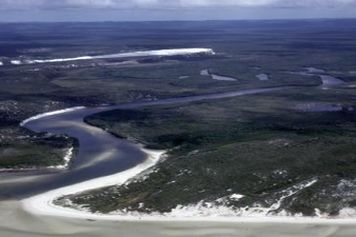
National Heritage Listing for Culturally Significant Areas
Binthi Land Holding Group Aboriginal Corporation
This project will create a Cultural Heritage Management System to record and manage cultural data. This will enable better knowledge and management of the Reef, support On-Country Plan, and support National Heritage listing status for the culturally significant areas on Binthi country. This is a Traditional Owner-led CAP project funded under the Traditional Owner Reef Protection Component.
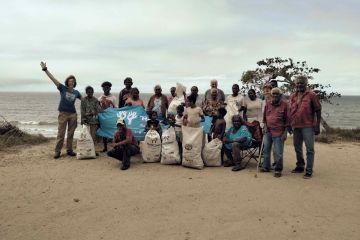
Jajikal Beach Protection of Balabay
Dabu Jajikal Aboriginal Corporation
This project empowers Jajikal Traditional Owners to more effectively manage Balabay (Weary Bay) by establishing an Elder Advisory Committee, and then developing and implementing a management plan for clean ups, protecting dunes, undertaking revegetation and installing educational signage with involvement from young people and Dabu Jajikal community.
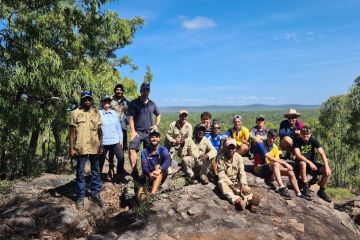
Cape York Young Reef Leaders
South Cape York Catchments
This project is developing a youth leadership program, which will bring together students from Cape York communities with people who work to study and protect the Great Barrier Reef - scientists, Rangers, Reef Guides and local community. Students will work alongside Rangers and managers who will mentor the students and then Reef Leaders will share their learnings and experiences with younger students through a hands-on field trip and clean-up initiative.
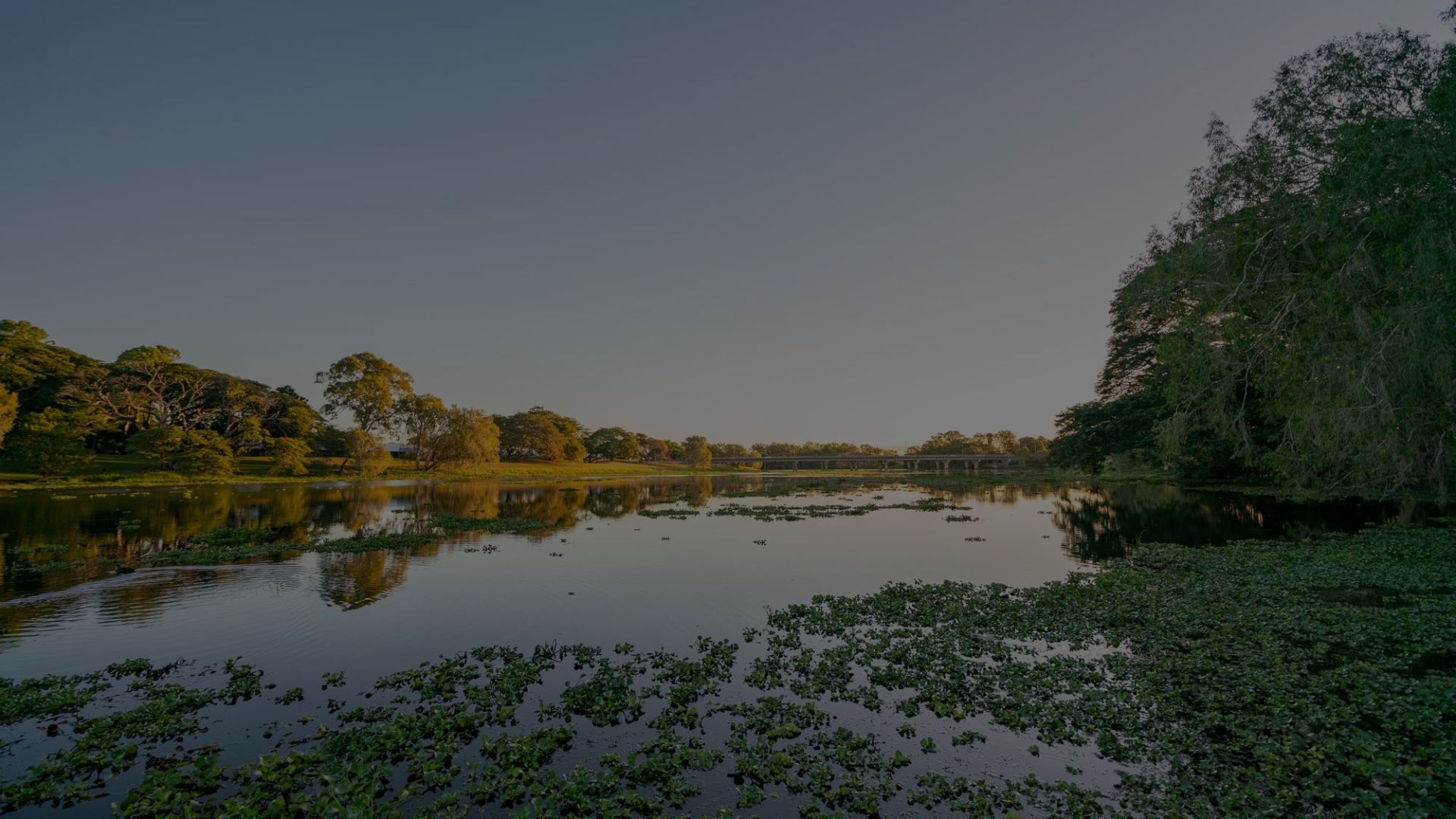
#Townsville - Dry Tropics
This Community Action Plan is bringing partners together to improve the values of local catchments and reefs.
This Community Action Plan is bringing partners together to improve the values of local catchments and reefs.
Townsville is the largest city in tropical Queensland, home to a range of unique values in the catchment and in the ocean.
NQ Dry Tropics led the development of the Burdekin Dry Tropics Reef Community Action Plan in collaboration with Reef Ecologic, across the Townsville, Ayr and Bowen regions.
The Dry Tropics Partnership for Healthy Waters are now leading the implementation of the CAP in collaboration with Reef Ecologic. The scope is focused on the Townsville region to strengthen coordination and collaboration between community groups in the region that are working towards Reef resilience and developing strategic community-based projects.
See information on CAP projects below.
#Burdekin Dry Tropics Projects
Projects to date focused on turtle monitoring and protection and wetland restoration.
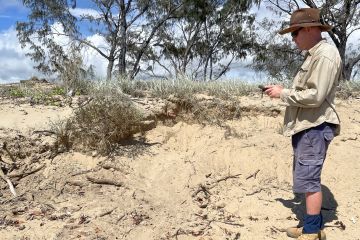
Improving Nesting Success for Sea Turtles at Cape Upstart Station
Whitsunday Catchment Landcare
This turtle nest identification and monitoring program at Abbot Bay enhances the protection of nests and hatchlings from feral predation by training volunteers in nest identification and monitoring, installing nest protection devices, and monitoring the results at each nest site. Nest location data contributes to the Cape York Indigenous Rangers Turtle monitoring project.
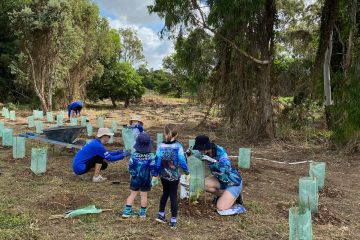
Community wetland restoration at Parker’s Lagoon
Lower Burdekin Landcare
This community-driven wetland restoration project is improving the ecological condition of Parker’s Lagoon to increase habitat for native terrestrial and aquatic species through the removal of invasive plant species, restoration and maintenance of native riparian vegetation and the implementation of a Weevil Program to manage the growth rates of invasive plant Salvinia.
#Townsville Projects
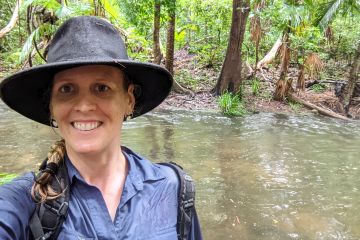
Riparian Monitoring and Rehabilitation Planning
Wildlife Surrounds
This project is conducting baseline riparian condition assessments for the priority waterways; Bohle River, Stuart Creek and Alligator Creek. This project is filling an important information gap for the Dry Tropics Report Card which currently has no metric for riparian condition. It will also provide important baseline information and recommendations for on ground actions to begin rehabilitating priority waterways in the Townsville region.

Grounds to Grounds - HumiSoil Tuckshop Blend initiative
Atlas Soils
This project is creating deep, breathable soils through a youth-driven community effort, by transforming school food waste into a range of soil health products. It is enhancing sustainability, engaging students, and developing a circular economy model that will generate revenue for sustainable outcomes. Carbon sequestration into the soil will be increased, and biodiversity and water quality will be improved for protection of the Great Barrier Reef.
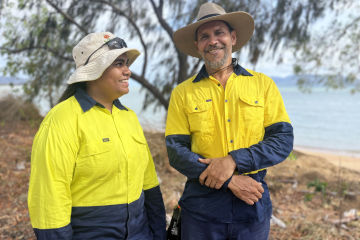
Reef Revolution - Empowerment through nature
Envite Environment
This project is delivering ecological restoration works along Mundy Creek to reduce negative impacts to the reef catchment, while delivering an engaging capacity building program to provide vocation skills and empower low risk prisoners through connection to nature and working on country.
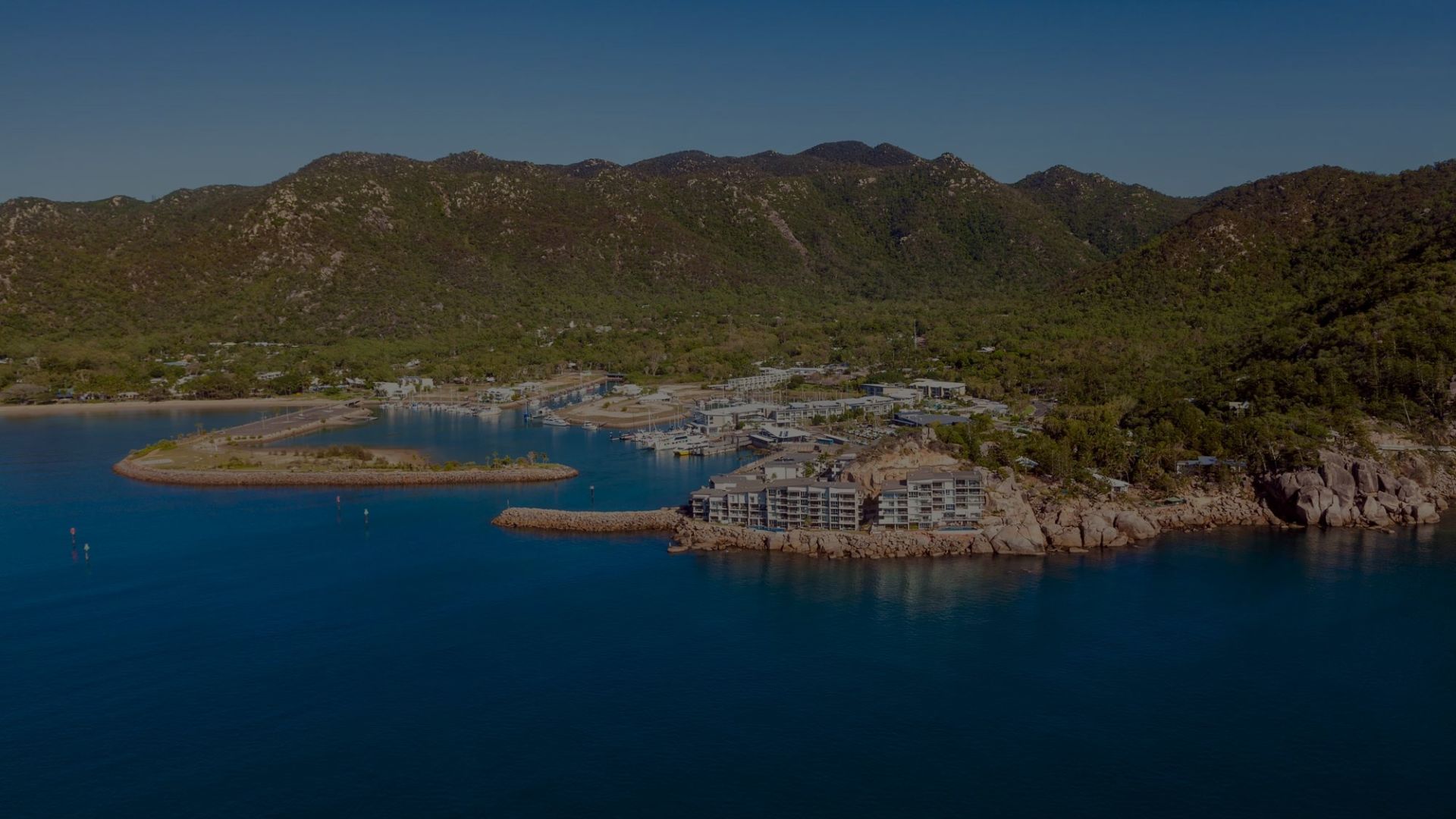
#Magnetic Island (Yunbenun)
This Community Action Plan is uniting a range of partners for a whole-of-island approach to understanding place, protecting unique values and building resilience.
Magnetic Island, located off the coast of Townsville in north Queensland, is known by Traditional Owners, the Wulgurukaba, as Yunbenun. Situated within the Great Barrier Reef World Heritage Area, the island is home to a population of approximately 2,000 residents and is predominantly national park and a haven for wildlife. Yet there are also growing pressures on this unique island community.
Magnetic Island Community Development Association (MICDA) led the development of the Magnetic Island Reef Community Action Plan. This geographically specific CAP built the leadership capacity of Magnetic Island residents through the co-design of a whole-of-island approach to identify and help coordinate targeted actions to promote Great Barrier Reef World Heritage Area resilience.
MICDA are now implementing the CAP on Magnetic Island including a review of the plan with the community and providing support for current and future CAP projects.
See information on CAP projects below.
#Magnetic Island Projects
Projects to date are focused on collaboratively documenting ecological and cultural values to prioritise actions.
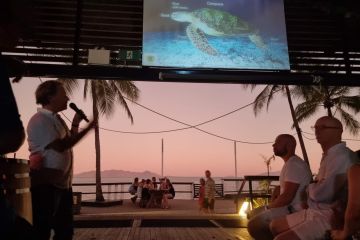
Community partnerships for ecosystem monitoring
Magnetic island Community Development Association
The project is harnessing the energy and knowledge of residents, Traditional Owners, and stakeholders to systematically record, report on, and communicate the Island’s marine and coastal ecosystem health, and factors affecting this health through collaborative citizen science and working with Traditional Owners to encourage two-way knowledge sharing.

Magnetic Island's World Heritage Values
Magnetic island Nature Care Association
The project is empowering the island community to identify and address knowledge gaps to support planning and implementing actions to reduce threats through on-ground activities (including protection and rehabilitation) and identify knowledge gaps that can be targeted by citizen science (including survey and monitoring).
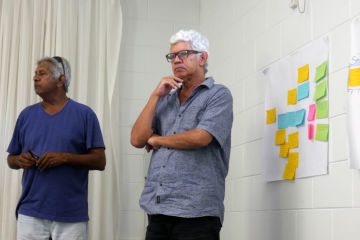
Strengthen Traditional Owner aspirations on land and sea country
MICDA and the Wulgurukaba Working Group
The project is increasing Traditional Owner-led on-country initiatives which promote and strengthen cultural heritage and contribute to Great Barrier Reef World Heritage Area protection, including a cultural database, two-way learning between Traditional Owners, scientists, and residents. conducting monitoring, restoration of local waterways, and local youth engagement.
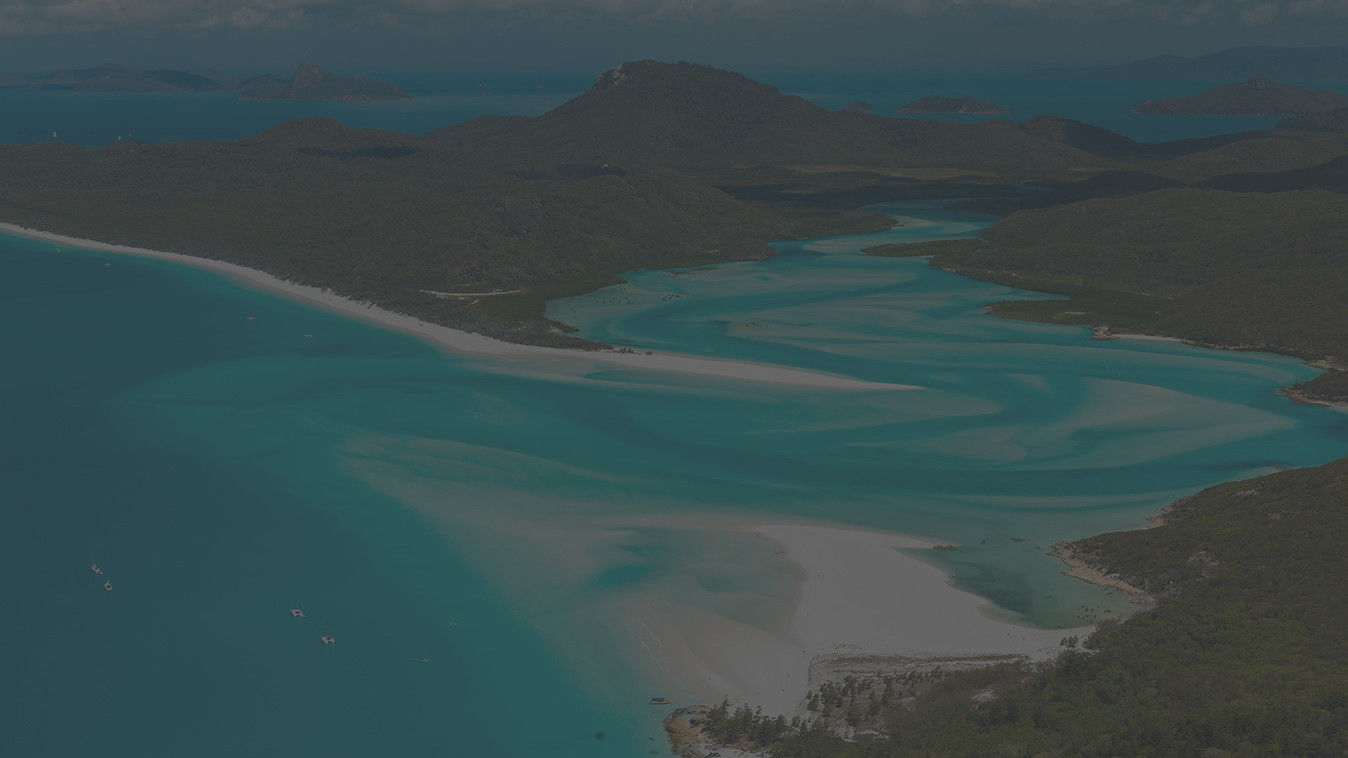
#Mackay Whitsunday Isaac
This Community Action Plan (CAP) is making it easier for local community groups to implement impactful Reef protection actions by enabling collaboratively designed, ready-to-go projects and sharing collective achievements.
The Mackay Whitsunday Isaac region boasts a rich diversity of habitats and wildlife, a vibrant tourism industry and an active community committed to its protection. Yet community recognises there is more to be done.
Reef Catchments led the development of the Mackay Whitsunday Isaac Community Action Plan, bringing together Traditional Owners and stakeholders to define a collective vision and clear series of priorities for community-led action to protect the Reef to help enhance the efforts of many motivated and engaged citizens throughout the region in achieving meaningful change.
The CAP is now being implemented, including a review of the plan with the community and providing support for current and future CAP projects.
See information on CAP projects below.
#Mackay Whitsunday Isaac Projects
CAP projects to date are focused on coastal rehabilitation and climate action through waste reduction.
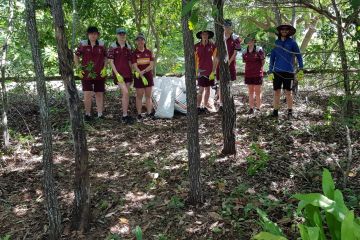
Rehabilitating the Sarina Catchment
Sarina Landcare Catchment Management Association
This project is engaging youth, volunteers, landholders, stakeholders, and Traditional Owners, in the delivery of on-ground rehabilitation activities at Grasstree Beach and Carmila Beach including weed control, revegetation, marine debris collection and surveys, native plant propagation as well as raising awareness of the importance of having healthy, resilient coastal areas, being the interface to our marine environments.
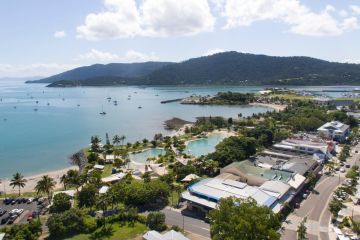
Whitsundays Waste Education
Whitsunday Regional Council
This project is reducing the carbon footprint of local residents and businesses through a community education program on food organics and garden organics (FOGO) waste reduction. Activities include developing and sustainable school-based FOGO Waste Reduction Education program and increasing community awareness of solutions for reducing food waste to reduce carbon emissions.
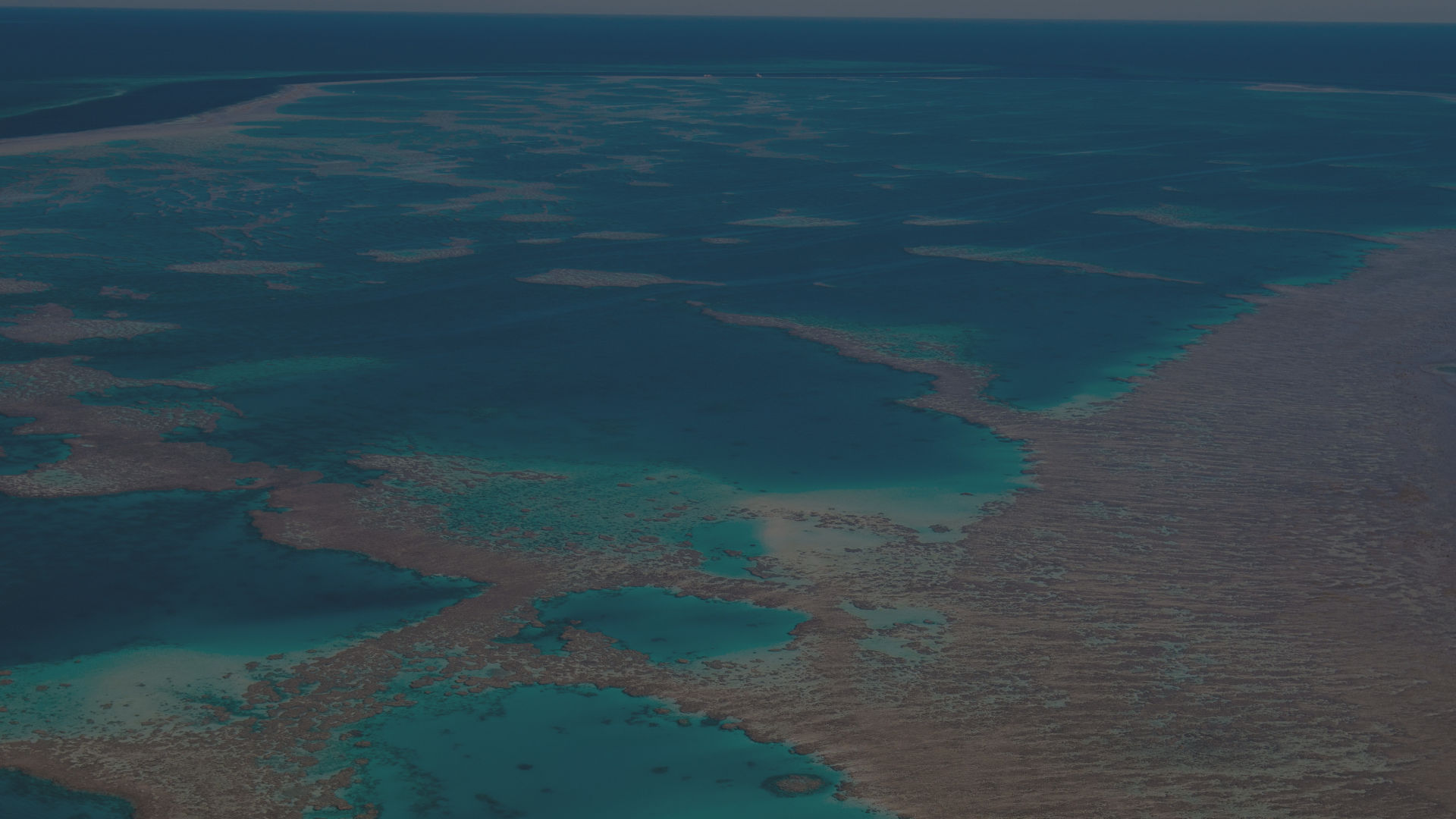
#Capricorn Coast
This Community Action Plan is the first collaborative plan documenting shared priorities for community Reef protection on the Capricorn Coast.
The Capricorn Coast is situated at the southern end of the Great Barrier Reef. The area is well known for beaches and the Keppel Islands but is also home to thriving coastal communities, strong tourism and agriculture sectors, national parks, and internationally significant wetlands.
Fitzroy Basin Association led the development of the Capricorn Coast Reef Community Action Plan in collaboration with Capricornia Catchments.
The CAP identified local priorities, future on-ground community actions and integrated, collated and celebrated the actions of diverse community stakeholders. The CAP Leader role is currently vacant in this region.
See information on CAP projects below.
#Capricorn Coast projects
CAP projects to date are focused on caring for coastal and marine habitats, turtle protection, regenerative farming and Indigenous youth leadership.
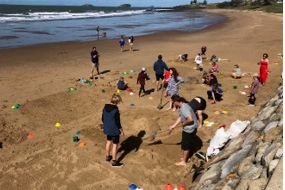
Empowering community action at the Sandy Krak Reef Festival
Keppel Coast Arts
This 100% youth-led festival will encourage stewardship and enthusiasm to protect the Great Barrier Reef through a series of workshops and a ‘Reef Quest’ to encourage behavioural changes through educational and interactive activities as part of the festival. Surveys will be conducted to understand the impact of the activities.
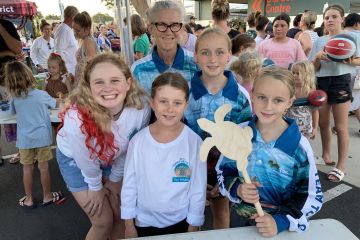
Team Turtle CQ –Team Hatchlings
Fitzroy Basin Association
This youth-led marine turtle conservation and stewardship initiative aims to provide Capricorn Coast youth a leadership platform to share and implement their marine turtle conservation ideas and passion with community to inspire positive stewardship for reef and marine environments. The project is underpinned by collaborative strategic project design involving experienced volunteers and Traditional Custodians from Woppaburra and Darumbal and local organisations.
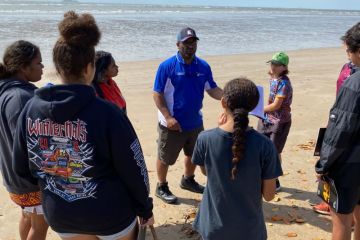
BROLGA
Darumbal People Aboriginal Corporation
This Traditional Owner-led project re-launches the BROLGA (Believe. Respect. Openness. Learn. Grow. Achieve.) Program to protect the Reef by bringing Darumbal culture and knowledge to youth and the general community. BROLGA Junior Rangers Program will provide experiences for Indigenous youth to learn about various environmental management topics integrating both western and traditional sciences and approaches.
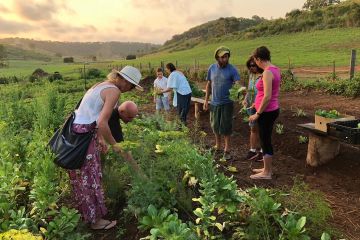
Regenerative Land Use Education Project
High Valley Dawn Permaculture Farm
High Valley Dawn Permaculture Farm are creating a permaculture/bush tucker garden to enable an intergenerational awareness and educational program in partnership with Indigenous Elders to engage landholders, individuals, community members, school and University students on regenerative agriculture principles and bush tucker awareness.
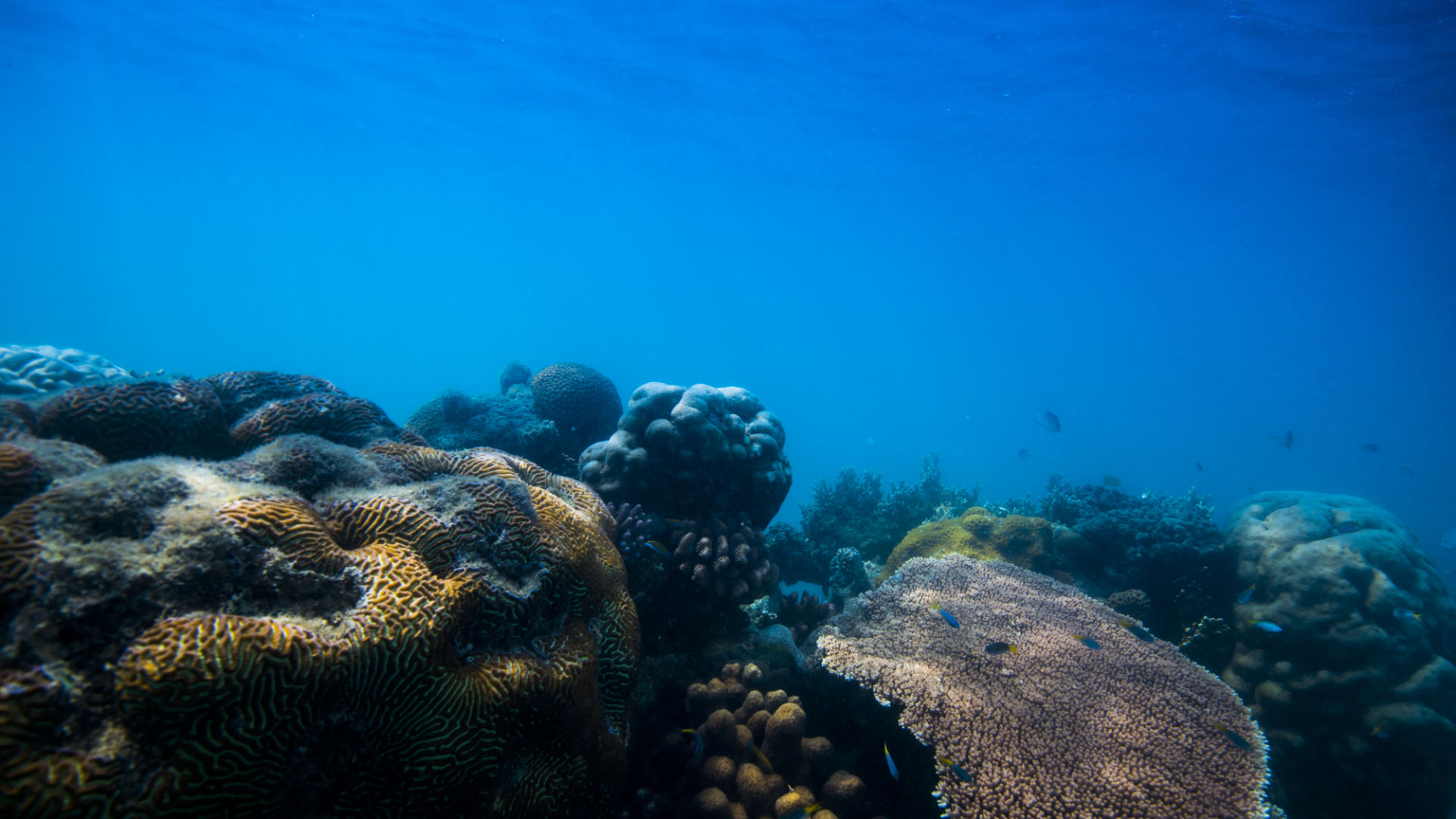
#Burnett Baffle
This Community Action Plan is connecting the community, youth, and Traditional Owner groups to collaborate and present a set of key focus areas to enhance and accelerate positive results for the Great Barrier Reef.
The Burnett Catchment Care Association are leading the implementation of a new CAP for the Burnett and Baffle catchments which focuses on protecting and restoring seagrass, mangrove and freshwater ecosystems, cultural burning practices, and growing community capacity to protect the Reef.
Previously, Burnett Mary Regional Group led the development of the Burnett Mary CAP. The focus of was on communities within the coastal, estuarine and marine areas of the Bundaberg, Gladstone, Fraser Coast and Gympie Local Government areas. The CAP featured four roadmaps including protecting marine turtle habitats, fish habitats, coral health and increasing cultural awareness of Traditional Owner Practices
A round of grants are currently open for CAP Projects in the Burnett Baffle region.
#Burnett projects
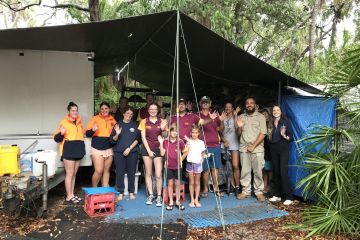
Bundaberg 4WD - Driving in the Right Direction
The Bundaberg Four Wheel Drive Club
This behaviour change campaign aims to enhance community knowledge and awareness of marine turtles and their cultural significance, increase community involvement in coastal and marine stewardship including youth, and reduce threats to marine turtles from impacts of 4WD behaviours on nesting beaches and marine debris working with Turtle Care Volunteers Queensland and Gidarjil Development Corporation at Wreck Rock.
Photo credit: Mangrove Watchers on the Endeavour River - South Cape York Catchments


